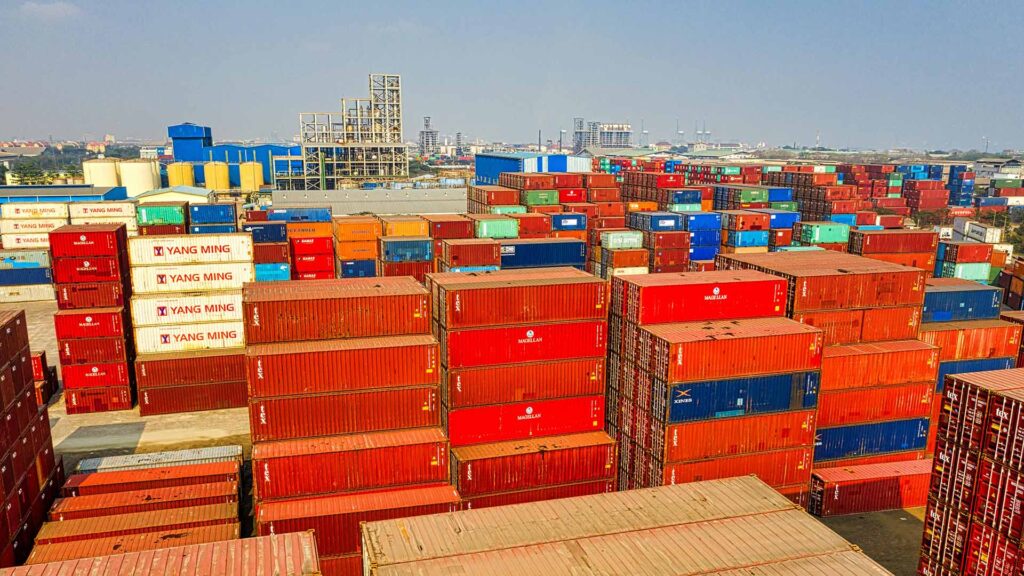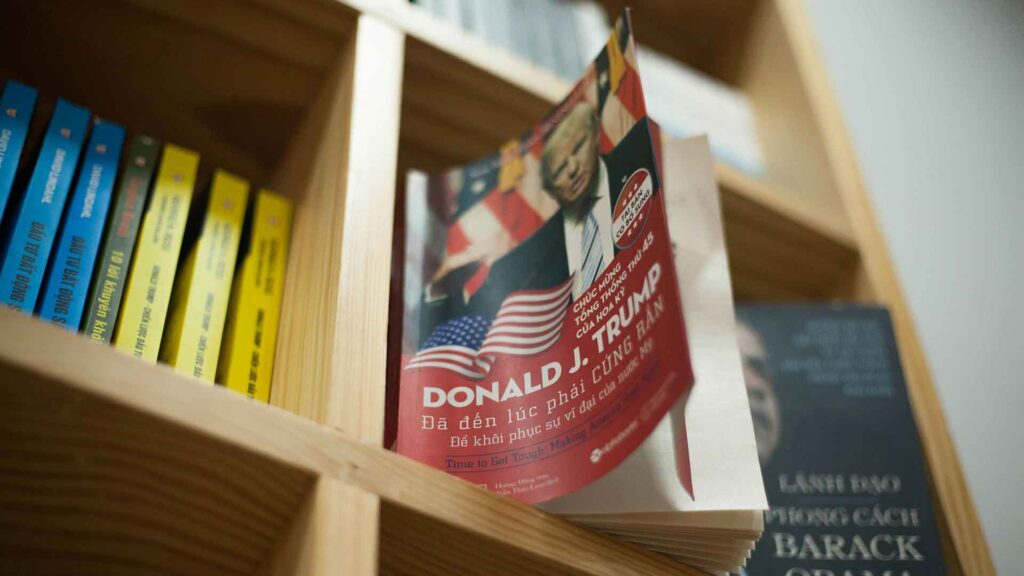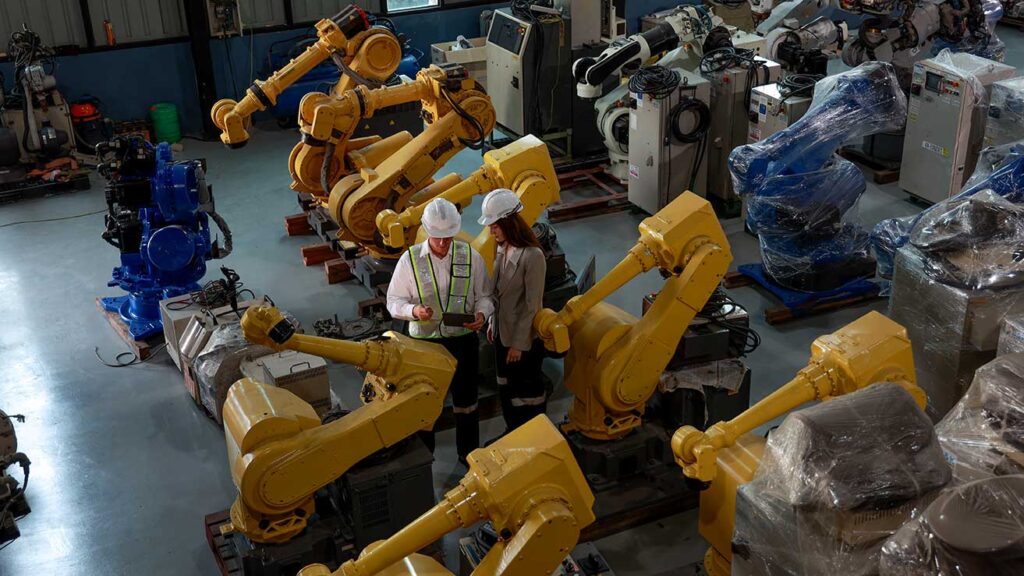Navigating the U.S.-China Tariff War: A Guide for California Small Business Entrepreneurs

Imagine walking into your store and seeing half your shelves empty—no new shipments of toys, clothes, or electronics, and no clear timeline for restocking. For California small business owners, this nightmare is becoming reality as the 2025 U.S.-China tariff war slams the brakes on trade. With container shipments from China to the Port of Los Angeles down by as much as 60%, and costs soaring due to 145% tariffs, entrepreneurs like you are facing supply shortages, price pressures, and a logistics sector in turmoil. But here’s the good news: California’s small businesses are resilient, and with the right strategies, you can not only survive this crisis but come out stronger.
This article dives into how the tariff war is hitting California small businesses, from mom-and-pop retailers to e-commerce startups, and offers practical steps to overcome the challenges. Whether you’re worried about empty inventory, rising costs, or keeping customers happy, we’ve got you covered with alternatives to adapt and thrive in this turbulent time.
How the Tariff War Crisis Impacts California Small Businesses
The U.S.-China tariff war, escalating in 2025 with 145% U.S. tariffs on Chinese goods and China’s retaliatory 125% duties, has disrupted the flow of goods through the Port of Los Angeles, a critical hub for California’s economy. Here’s how this crisis is affecting small businesses like yours.
Supply Chain Disruptions at the Port of Los Angeles
The Port of Los Angeles, alongside Long Beach, handles about 40% of U.S. imports from Asia, but shipments from China have plummeted. Overall port traffic is down 10% from last year, with China-specific container bookings dropping by 60%—and in some weeks, as much as 90%. This means fewer toys, apparel, electronics, and furniture arriving for your shelves or warehouses.
Worse, some importers are abandoning cargo at the port because the tariffs make goods too expensive to sell profitably. These unclaimed containers clog storage, delay deliveries, and rack up fees, hitting small businesses that rely on just-in-time inventory. For example, a small San Diego boutique might wait weeks for a delayed shipment of scarves, only to find customers have shopped elsewhere. Retailers risk empty shelves, especially as holiday seasons approach, threatening sales at critical times.
Rising Costs and Price Pressures
The 145% tariffs have made Chinese goods roughly 2.5 times more expensive, squeezing your profit margins. If you sell budget-friendly items like $10 t-shirts or $20 kitchen gadgets, passing on these costs could drive customers to big-box competitors. Even if you absorb the hit, your bottom line suffers.
Logistics costs are also spiking. With fewer containers moving through the port, trucking and warehousing firms are raising rates to offset losses—some report 20–30% hikes in local transport costs. Abandoned cargo adds demurrage fees (charges for delayed containers), further eating into your budget. For small businesses already stretched thin, these costs can feel like a death spiral, forcing tough choices between raising prices or cutting expenses.
Logistics Sector Fallout and Local Economic Strain
The logistics sector, a backbone of California’s economy, is reeling. Trucking companies serving the port have cut staff by 10–20%, and warehouse operators in the Inland Empire are scaling back. Even dockworkers at the Port of Los Angeles, represented by the International Longshore and Warehouse Union, face reduced hours or layoffs as container traffic slows. This means less reliable transport and storage services for your business, with longer wait times and fewer options.
The Port of Los Angeles supports 1.6 million jobs nationwide and $500 billion in economic activity, much of it in California. A prolonged slowdown could ripple through the state, hurting suppliers, service providers, and even your local coffee shop. For a small business owner, this feels like a double whammy: not only are your shipments delayed, but the community you rely on is struggling too.
Specific Challenges for Small Businesses
Unlike Walmart or Amazon, you don’t have deep pockets to stockpile inventory or negotiate with global suppliers. You also face pressure to keep prices low and deliveries fast to compete with e-commerce giants. A small business like a family-owned sporting goods store in Sacramento might lose customers if soccer balls or yoga mats are out of stock, especially if competitors source domestically or from non-Chinese suppliers. The tariff war hits hardest where small businesses are most vulnerable: cash flow, flexibility, and customer loyalty.
Take Lisa, a fictional Sacramento retailer who runs “Playtime Toys.” She imports affordable dolls and board games from China, but tariffs have doubled her costs, and her latest shipment is stuck at the port. With the holiday season looming, Lisa risks losing sales to online giants if she can’t restock. Her story reflects the real challenges California entrepreneurs face today.
Alternatives to Overcome the Crisis
The tariff war is daunting, but California small businesses have a history of turning challenges into opportunities. Here are five actionable strategies to navigate the crisis, from diversifying suppliers to leveraging technology.
Diversify Sourcing and Suppliers
Relying on Chinese imports is no longer sustainable, but alternative suppliers can fill the gap. Countries like Vietnam, Mexico, and India are stepping up as U.S. trade partners, with Vietnam’s exports to the U.S. surging 19% in 2025. Mexico, a short drive from California, offers tariff-free trade under the USMCA, making it a prime nearshoring option.
-
Action: Explore suppliers on platforms like Alibaba (filter for non-Chinese vendors), TradeIndia, or Mexico’s ProMexico directory. Attend trade shows like the Global Sources Summit to meet vendors in person. Be prepared for higher costs—Vietnam’s factories, for example, may charge 10–20% more than China—but faster shipping and lower tariffs can offset this.
-
Nearshoring in Mexico: Partner with maquiladoras (Mexican factories) for goods like electronics or apparel. Logistics hubs in Tijuana or Nogales can deliver to California in days, not weeks.
-
Action: Contact Mexico’s trade offices or use platforms like MexicoNow to find reliable partners.
-
-
Domestic Sourcing: Source from U.S. manufacturers to avoid tariffs entirely and support local economies. California has robust manufacturing for apparel, food, and tech components.
-
Action: Use directories like ThomasNet or Maker’s Row to find suppliers in Los Angeles, San Francisco, or the Central Valley. For example, a bakery could source packaging from a local producer instead of China.
-
Optimize Inventory and Supply Chain Management
With shipments unpredictable, smart inventory management is critical. Building a safety stock and rethinking logistics can keep your business running smoothly.
-
Build Safety Stock: Maintain a small buffer of inventory to weather delays. If you stockpiled goods before tariffs hit, use them strategically to bridge gaps.
-
Action: Use tools like QuickBooks or TradeGecko to forecast demand and avoid overstocking. A retailer might keep an extra month’s worth of bestsellers like phone chargers or winter hats.
-
-
Adopt Just-in-Case Inventory: Shift from just-in-time to just-in-case models, prioritizing reliability over lean operations.
-
Action: Lease affordable warehouse space in the Inland Empire, where rates are lower than Los Angeles. Split inventory across multiple locations to reduce risk.
-
-
Streamline Logistics: Partner with third-party logistics (3PL) providers to handle trucking and warehousing efficiently, even with lower port traffic.
-
Action: Compare 3PLs like Flexport or ShipBob, which offer small business-friendly pricing and real-time tracking. A 3PL can consolidate shipments to cut costs.
-
Adjust Pricing and Marketing Strategies
Rising costs may force price hikes, but smart marketing can keep customers loyal and attract new ones.
-
Transparent Pricing: Be honest about tariff-driven price increases, emphasizing your commitment to quality and local jobs.
-
Action: Use social media or email campaigns to share your story. For example, a pet store could explain that higher prices for dog toys support fair wages and sustainable sourcing.
-
-
Focus on Premium Products: Shift to higher-margin, non-Chinese goods to offset costs. Customers are willing to pay more for quality or unique items.
-
Action: Curate niche products like eco-friendly home goods or artisanal accessories. A gift shop could stock handcrafted candles from California artisans instead of Chinese imports.
-
-
Promote Local and Sustainable: Tap into consumer trends favoring ethical brands by marketing domestically sourced or sustainable products.
-
Action: Highlight “Made in USA” or eco-certifications in your branding. Run Instagram ads showcasing your sustainable mission to boost appeal.
-
Leverage Technology and E-Commerce
Technology can help you reach customers and manage operations efficiently, even during a supply chain crisis.
-
Enhance Online Presence: A strong e-commerce platform can offset losses from physical retail, where shortages hit hardest.
-
Action: Optimize your Shopify or WooCommerce store with SEO and targeted Google Ads. Offer promotions to drive online sales, like free shipping for orders over $50.
-
-
Use Data Analytics: Track customer behavior and supply chain data to make informed decisions.
-
Action: Adopt tools like Google Analytics (free) or Zoho Inventory ($29/month) to predict demand and optimize stock. For example, analyze which products sell fastest to prioritize sourcing.
-
-
Explore Dropshipping: Partner with non-Chinese dropshipping suppliers to offer variety without holding inventory.
-
Action: Use platforms like Oberlo or Spocket to source from U.S. or EU suppliers. A clothing retailer could dropship trendy accessories from a Texas supplier.
-
Advocate and Network
You’re not alone in this crisis. Collaborating with peers and advocating for support can open doors to resources and solutions.
-
Join Trade Associations: Groups like the California Chamber of Commerce or National Retail Federation advocate for tariff relief and offer trade policy updates.
-
Action: Attend their webinars or local events to stay informed. Membership often includes access to supplier networks and lobbying efforts.
-
-
Network with Peers: Share strategies and supplier contacts with other small businesses to navigate the crisis collectively.
-
Action: Join California’s Small Business Development Centers (SBDCs) for free mentorship and networking. Your local SBDC might connect you with a Mexican supplier or a 3PL.
-
-
Seek Government Support: Explore federal or state programs to offset costs, like SBA loans or California’s Go-Biz grants for small businesses.
-
Action: Visit www.business.ca.gov or contact your local SBA office to apply for funding. A $10,000 grant could cover warehouse leasing or marketing costs.
-
Long-Term Strategies for Resilience
While the tariff war may last 1–3 years, building a resilient business now prepares you for future challenges. Here’s how to future-proof your operations.
Build a Flexible Supply Chain
Invest in multi-country sourcing to reduce reliance on any single market. Use supply chain mapping tools like Sourcemap to identify risks and diversify suppliers. For example, a tech retailer could source cables from Mexico, batteries from India, and cases from the U.S.
Invest in Local Ecosystems
Partner with California manufacturers and logistics providers to create a regional supply chain. Support initiatives like California’s Manufacturing Network to connect with local producers. A furniture store could collaborate with a San Diego woodworker to offer custom pieces, boosting local jobs.
Embrace Innovation
Adopt automation or AI tools to cut costs, like inventory management software or customer service chatbots. Explore 3D printing for small-scale manufacturing—perfect for custom jewelry or prototypes. These innovations keep you competitive, even in tough times.
Stay Informed and Agile
Monitor trade policy updates via the U.S. Trade Representative or World Trade Organization websites. Train your team to pivot quickly, whether it’s switching suppliers or updating pricing. Agility is your superpower as a small business.
Conclusion
The U.S.-China tariff war has thrown California small businesses into a storm of supply shortages, rising costs, and logistics chaos. With the Port of Los Angeles reeling from a 60% drop in Chinese shipments and local trucking firms cutting jobs, the challenges are real. But so is your potential to overcome them. By diversifying suppliers, optimizing inventory, adjusting pricing, leveraging technology, and networking with peers, you can navigate this crisis and build a stronger business.
Start today with one step: contact a new supplier from Mexico or join your local SBDC for support. California’s small business spirit has conquered tough times before, from recessions to pandemics. This tariff war is just another hurdle, and with resilience and innovation, you’ll turn it into an opportunity to shine.


 English
English 
































































































































































